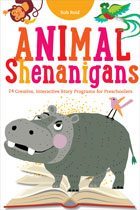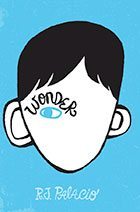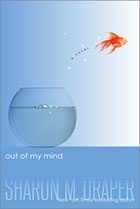by Rob Reid

I am fortunate to teach three sections of children’s literature each semester to future elementary teachers, future special education teachers, and future librarians. It’s truly a fun gig. I was asked by the Bookology folks to share those books and topics I teach to these budding professionals.
I open each semester by introducing myself and reading my current favorite interactive picture book. The last few years, it has been Press Here by Hervé Tullet and the students are delighted to know such a book like this exists. I then ask them to tell me what comes to mind when I say, “Children’s Books.” I write their responses on the board and…the same titles appear year after year. Titles from their school years: Arthur, Amelia Bedelia, Magic Treehouse, Harry Potter, Dr. Seuss — the usual suspects. All good choices but no surprises and nothing recently published. That’s my job then for the next 15 weeks: combine history of children’s literature with the best of the newer stuff, so they can share those with kids down the road.
Next, we look at current trends in children’s publishing: trends I pick up from Publishers Weekly, the Coöperative Children’s Book Center, the American Library Association, and my own observations. We also look at the current NY Times bestseller lists for picture books, middle grade books, and series. I read a few of those bestselling picture books to the class as well as selections of the chapter books. (I read aloud children’s books to my college students pretty much every class session.)
I contrast what sells with what wins the numerous awards: quantity vs. quality (and luckily, the two go together with many titles) and how kids need to be exposed to all. Over the semester, my students learn what the following awards are for, who are the most recent winners, and many of the notable past winners: Newbery (and I share my own experience being on that committee), Caldecott, Geisel, Coretta Scott King, Pura Belpré, American Indian Youth Literature, Scott O’Dell, Sibert, Orbis Pictus, and the Schneider Family Award.
Si nce that last award originated at the University of Wisconsin-Eau Claire, where I teach, and because I have many special education students, we put special emphasis on this award that recognizes portrayals of people with disabilities. As a class, we all read Wonder by R.J. Palacio (before that it was Rules by Cynthia Lord) and I will also be adding El Deafo by Cece Bell this upcoming year as a required read to represent graphic novels (I have been using the first Babymouse and the first Lunch Lady as examples of elementary school graphic novels).
nce that last award originated at the University of Wisconsin-Eau Claire, where I teach, and because I have many special education students, we put special emphasis on this award that recognizes portrayals of people with disabilities. As a class, we all read Wonder by R.J. Palacio (before that it was Rules by Cynthia Lord) and I will also be adding El Deafo by Cece Bell this upcoming year as a required read to represent graphic novels (I have been using the first Babymouse and the first Lunch Lady as examples of elementary school graphic novels).
The other required read is Love That Dog, and I introduce the other works of Sharon Creech and Walter Dean Myers (who is a fictionalized character of himself in the book). We look at dozens of poetry books not written by Shel Silverstein (and I have some good Silverstein anecdotes to share) and learn ways to make poetry fun for kids.
 Students pick an elective chapter book from a list I provide (which includes Roll of Thunder Hear My Cry, Out of My Mind, Joey Pigza Swallowed the Key, Al Capone Does My Shirts, Coraline, Tale of Despereaux, Princess Academy, Elijah of Buxton, and several more) and they create a literature activity guide to go with their novel.
Students pick an elective chapter book from a list I provide (which includes Roll of Thunder Hear My Cry, Out of My Mind, Joey Pigza Swallowed the Key, Al Capone Does My Shirts, Coraline, Tale of Despereaux, Princess Academy, Elijah of Buxton, and several more) and they create a literature activity guide to go with their novel.
Students draw the name of a children’s illustrator and put together a PowerPoint to share with the class what they learned about the various artistic elements present in the picture books.
We also look at the timeline of diversity in children’s literature, traditional folklore from around the world, fantasy and science fiction, controversial books, informational books and biographies, easy readers and bridge books, realistic fiction, historical fiction, and Minnesota and Wisconsin book creators (since most of my students are from these two states and we have so many talented, published, award-winning authors and illustrators here).
Each student also has to tell an oral story to the class based on a folktale. They are sent to the 398 section of the library to look through both the picture book editions and anthologies of folktales, learn one, and share it without notes.
We finish the semester with competitive rounds of Kiddie Lit Jeopardy, they fill out their student evaluations that all read “This was a lot of work!” and I send them off to explore the remaining 99% of the wonderful children’s books we didn’t have time to cover in class.
[Reid-Rob-bio]
